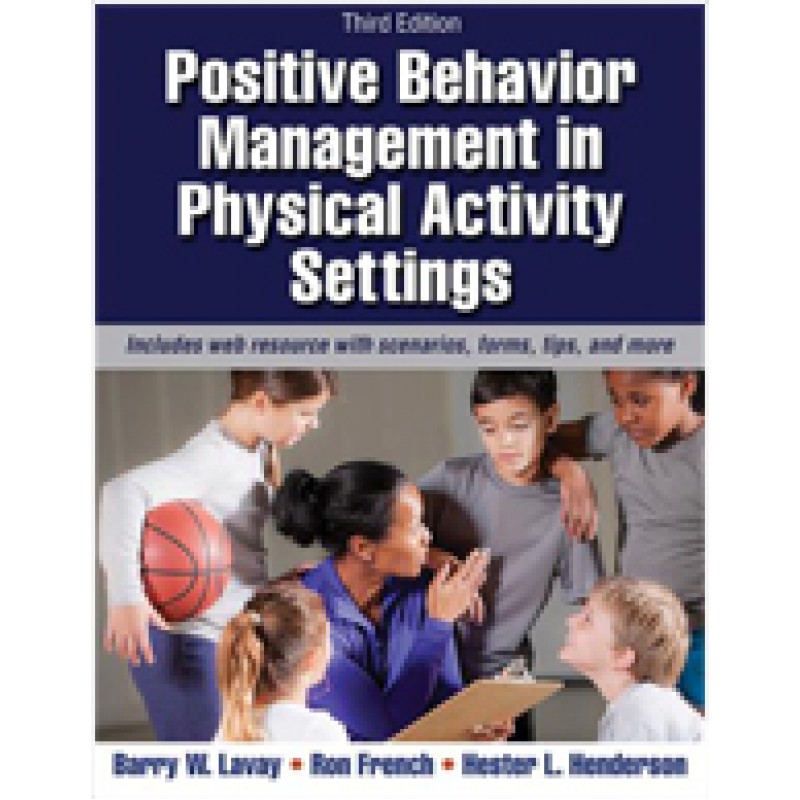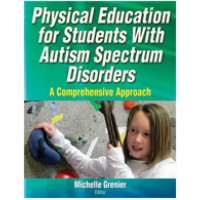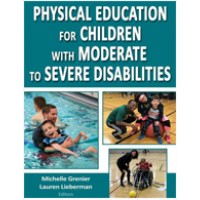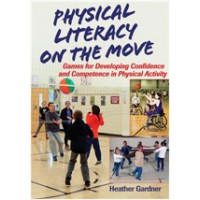Positive Behavior Management in Physical Activity Settings, 3rd Edition
| Author(s) | Barry Lavay, Ron French, Hester Henderson |
| ISBN10 | 145046579X |
| ISBN13 | 9781450465793 |
| Format | Paperback |
| Pages | 296 |
| Year Publish | 2016 January |
Synopsis
It’s never been more challenging to manage behavior and motivate students in a physical activity setting.
There are more at-risk children and students with disabilities to manage. Physical activity professionals also face the unique challenge of providing instruction to large groups with limited resources and distractions galore. If not handled correctly, these challenges can quickly add up to chaos, ineffective instruction, and frustrated, burnt-out physical activity professionals.
That’s where the third edition of Positive Behavior Management in Physical Activity Settings, Third Edition comes in. This resource will help you not only overcome those and other discipline challenges, but also use tried-and-true, positive techniques to develop appropriate and responsible behaviors and good character among all learners.
This new edition incorporates principles, methods, and instructional practices from psychology, special education, pedagogy, recreation, athletics, and coaching. It shows teachers, coaches, and recreation leaders how to apply the principles that have proven effective in schools, youth sport programs, and recreation sites.
Positive Behavior Management in Physical Activity Settings offers this new material:
- A new chapter on bullying, providing up-to-date information to help you recognize and manage such behavior within your group
- A new chapter on children with special needs, including autism spectrum disorder, attention deficit disorder, learning disabilities, intellectual disabilities, traumatic brain injury, and behavioral/emotional disabilities
- A new chapter on behavior management ethics and professionalism, to help those who are preparing to be physical activity professionals at the pre-service and in-service levels
- New sections on motivating children who are overweight or obese, using the latest research to help you to encourage them to participate
Also new to this edition are an instructor guide and a web resource. The instructor guideoffers different sample syllabi, showing various ways to teach the course; sample assignments; answers to chapter review questions; suggested further readings; and useful websites and apps. The web resource supplies behavior management scenarios, sample forms (checklists, rubrics, certificates, worksheets) from the chapters, instructions for designing an Applied Behavior Analysis graph and a trifold display, useful websites and apps, and a glossary by chapter.
This text provides you with evidence-based strategies in managing special needs populations, including designing a positive behavioral support (PBS) model and a behavioral intervention plan (BIP), as well as information on response to intervention (RTI).
The authors have added a fourth section to this new edition. Part I details the challenges that professionals face in developing a positive learning environment, and shows readers how to be proactive in doing so. Part II outlines the interventions that physical activity professionals have successfully used in a variety of settings. This part includes chapters that discuss behavioral, humanistic, and biophysical approaches. The final chapter in this section addresses how to evaluate the behavior intervention.
Part III explores behavior management with various populations, and offers the new chapters on bullying and on special needs children. In part IV, the authors discuss ethical and professional behavior of physical activity professionals relative to the application of behavior management techniques used with children and youth with a focus on professionalism. The final chapter will synthesize the information presented in this text and assist the reader to take the appropriate steps needed to develop a working, teaching, and behavior management portfolio.
GUIDANCE TO MOTIVATE CHILDREN
Positive Behavior Management in Physical Activity Settings offers current and future K-12 physical educators, coaches, recreation specialists, and adapted physical education specialists guidance in motivating young people. You will learn how to manage behavior and create a physical activity environment that is conducive to performance and learning—and that is designed to empower children rather than control their behavior.
About The Authors:
Barry W. Lavay, PhD, is a professor of adapted physical education at California State University at Long Beach. He has authored or coauthored more than 15 texts and chapters and more than 60 juried articles in physical education and special education journals. He has made close to 100 presentations at the international, national, regional, and state levels and given numerous seminars and workshops.
Lavay has spent four decades as a university professor in physical education teacher education and as a public school physical education teacher. He has been a member of SHAPE America since 1973 and has been a fellow member of the AAHPERD Research Consortium since 1989. He served on the steering committee for the Adapted Physical Education National Standards Project from 1992 to 1997. He also was a member of the California AHPERD Council on Adaptive Physical Education for five years.
In 2011 Lavay received the William A. Hillman Distinguished Service Award from the National Consortium for Physical Education for Individuals with Disabilities. He enjoys spending time with his family, and he runs and cycles in his leisure time.
Ron French, EdD, CAPE, is professor emeritus in the department of kinesiology at Texas Woman’s University in Denton. In 1971 Dr. French received his doctorate in special education and special physical education from the University of California at Los Angeles.
Since 1981 he has taught a graduate course on behavior management in physical education and sport. A former public school physical educator, he has presented at more than 100 workshops, conferences, and conventions and written or coauthored more than 72 articles and two manuals on behavior management. Dr. French has earned such awards as the TWU Carnaro Professor Award and the Texas Piper Professor Award.
Hester L. Henderson, PhD, taught adapted physical education for one year at Iowa State University and then joined the faculty in the department of exercise and sport science at the University of Utah, where she has taught since 1983.
She has written and administered 26 grants, primarily in professional preparation, totaling $6.2 million. She has authored or coauthored 41 manuscripts and has coauthored or been a major contributor to eight books and four book chapters. She was a major contributor to the revision of the first edition of the book Adapted Physical Education National Standards and the Adapted Physical Education National Standards Study Guide.
Dr. Henderson has made more than 100 presentations at all levels. In 1999 Dr. Henderson developed and still administers two service learning projects at the University of Utah. She also started the physical education program at the Pingree Learning Center for Children with Autism.
Since 1992 she has served on the executive committee and helped develop the Adapted Physical Education National Standards (APENS). She is a member of the national, regional, and state Associations of Health, Physical Education, Recreation and Dance as well as the National Consortium of Physical Education for Individuals with Disabilities.
Dr. Henderson has received the University Faculty Community Service Award, Select 25 Award, University Beacon of Excellence Award, University Distinguished Faculty Service Award, Hollis Fait Scholarly Contribution Award, and College of Health Distinguished Mentor Award. In her free time she enjoys playing soccer, running, biking, and snowshoeing.








